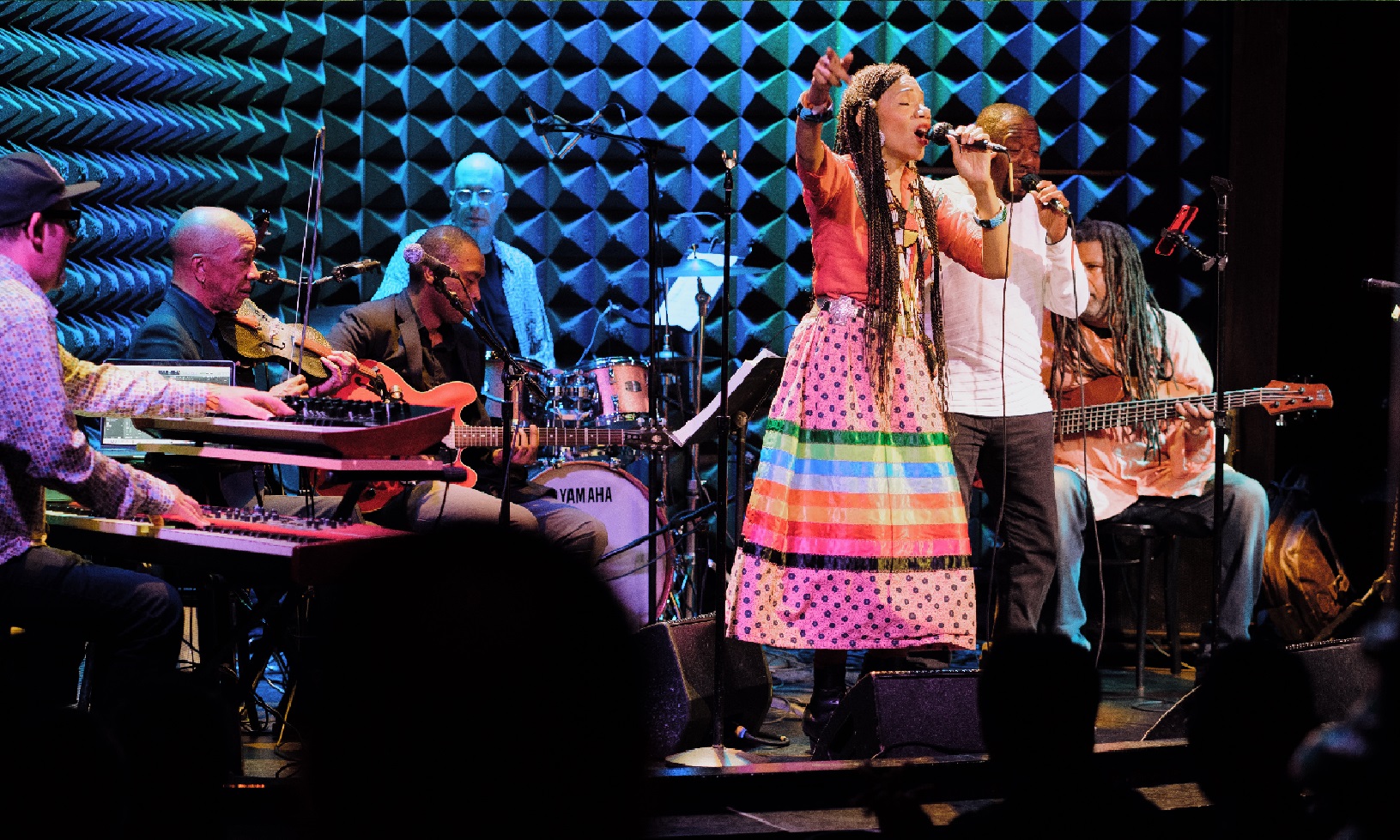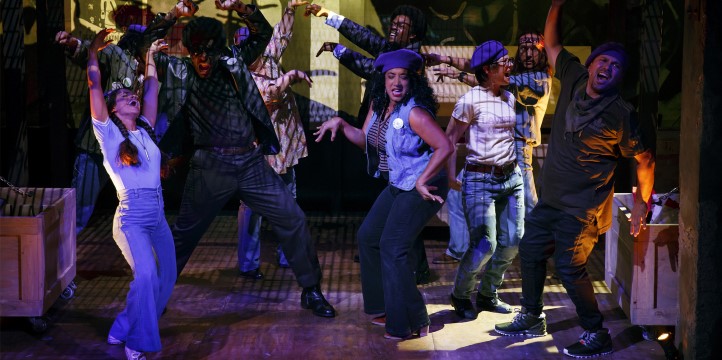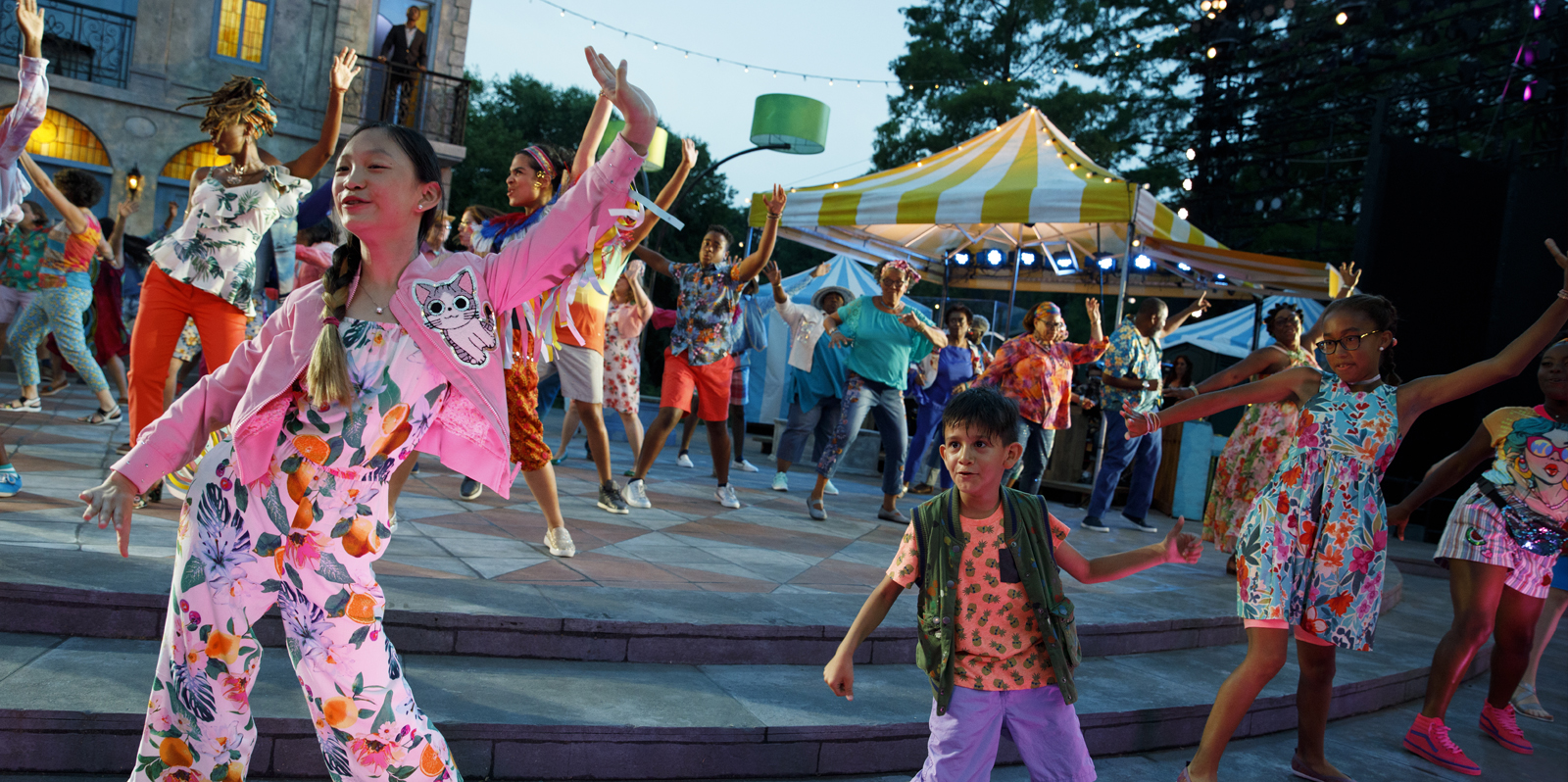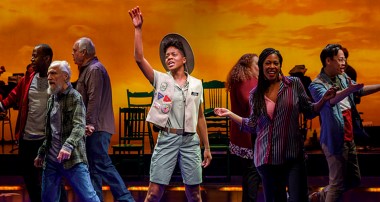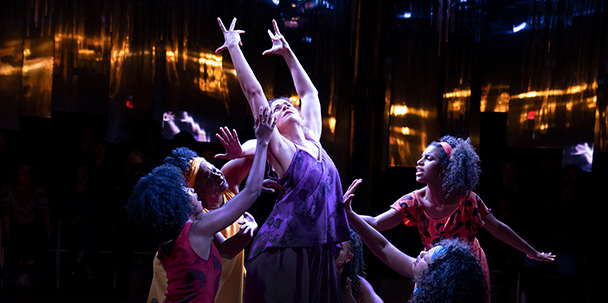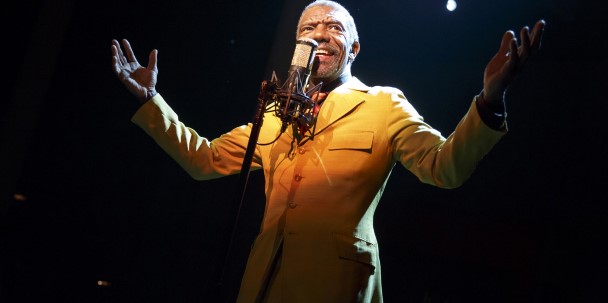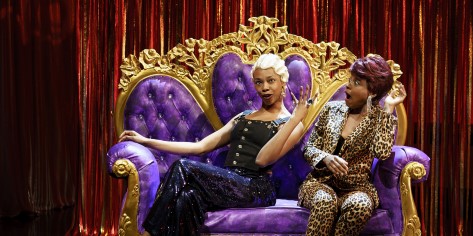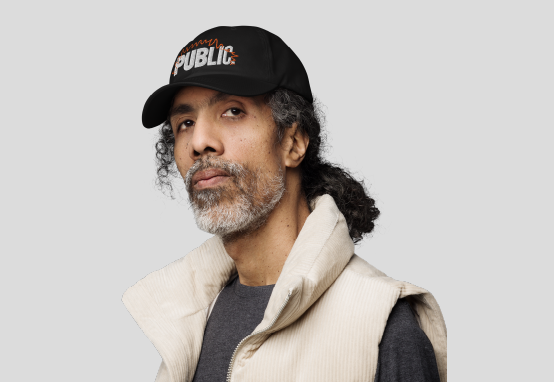A conversation with modern-day revolutionary artist Raja Feather Kelly and writer Des'ree Brown
Being a choreographer on a brand-new musical is one thing, but being the creative consultant and helping the team navigate a production packed with history, trauma, and resilience through movement is a whole other story. Three-time Princess Grace Award-winner Raja Feather Kelly, recently known for his work on the Pulitzer-winning musical A Strange Loop and Pulitzer-winning play Fairview, had the opportunity to collaborate with director Leigh Silverman on The Public Theater’s world-premiere production of SUFFS.
“I love being billed as a choreographer but…it doesn’t quite capture all that I do,” says Kelly, who also runs his own New York City-based arts organization, feath3r theory. He knew he had to give more creative input than a choreographer typically does on a production loaded with societal and cultural nuances. While these nuances usually come with new works, SUFFS was a more intricate task, being embedded with rich but complicated history. “[There were many] conversations that the show was trying to tackle…around race, gender…like the state of theater in many ways.” But Kelly was up to the challenge.
“It was very exciting for me to both speculate and do some research on [things] like ‘how did people move?’ [or] ‘how did they express themselves?’” These tiny details, from delicately lifting a hand to defiantly stomping a foot, were all justified by adamant research on Kelly’s part and “a constant passing of the baton” with Silverman’s vision. “Over the course of the past 100 years, the way that we express ourselves in conversation has developed a tremendous amount, particularly because communication has become so much more urgent.”
In a company where Black women are portraying white women, women are portraying men, and there are a plethora of different bodies on stage, “it becomes even more important to become more specific” with the choreography Kelly was implementing. Grace McLean and Tsilala Brock, who play Woodrow Wilson and his advisor Dudley Malone respectively, are portrayed as the comic relief or the buffoons throughout the piece, using vaudevillian-like gestures throughout their scenes. However, with Brock playing a white man as a Black actress, Kelly had to make sure her movements didn’t come off “minstrel-like; there’s a race difference for us [the audience], but there wasn’t a race difference for [Wilson and Malone].”
When it came to women who were playing the same class and gender, the movements were influenced by how they chose to command the space. How do these women find ways to disrupt the status quo with their bodies? Jenn Colella, who portrays the eloquent and collected Carrie Chapman Catt, holds her body high and tight and uses very minimal hand movement, while Shaina Taub’s Alice Paul constantly talks with her hands in a way Kelly described as “very frazzled.” While both of these women portray white, financially privileged women, their vastly different personalities were shown through how they demanded to be heard.
As experimental as many of the moments Kelly choreographed were, he had to make sure they didn’t stray too far away from the story. As much as he wanted Nikki M. James, who portrays Ida B. Wells, to “snap her fingers” or “shake her head,” she instead creates tension in stillness, unlike Alice or Carrie. “It’s funny because we think of Ida as an agitator…but our vision of it, all she does is walk into place.”
“The power of the body” is used as a vessel for demonstration throughout SUFFS. “Thinking about how people communicated with their bodies and behave with their bodies [in] 1913...was something curious [for] me.” Kelly particularly calls on a moment in the show where the women protest silently in front of the White House, with the silence having to be portrayed through their bodies being faced upstage since the scene was still sung-through. “I’m an experimental realist. I don’t make movement before I get in the room. I make it on the bodies in the room.”
The set, designed by Mimi Lien, also played a huge part on how Kelly decided to navigate the physical space, with most of the stage being filled with rising stairs and pillars. In a piece that’s mostly sung-through, Kelly and Silverman ensured that each movement made by the ensemble spoke with one another, not just creating a stage picture but constantly moving the story forward. From vaudevillian stop motion movements, to having the ensemble rush down the stairs towards the front row, “the audience doesn’t question…those absurd or quirky moments,” because they are still grounded in the story.
On a production that not only allowed Kelly to experiment and have fun with new choices, working on SUFFS ended up teaching him many personal lessons. “I really like to take on projects that I feel expand my thinking, but also allow me to do more of what I like to do personally. I’m getting an education while I’m at work. And that’s amazing. That really changes you as a creator.”
SUFFS is now playing at The Public Theater through Sunday, May 29.
Des’ree Brown (she/her) is a director, activist, and educator whose work is dedicated to centering stories of queer, Black femmes. She currently resides on the occupied lands of the Ohlone people in Berkeley, California where she is one of the artistic fellows at Berkeley Rep. Outside of directing and theater journalism, she loves to cook, box, and go seal watching. IG: @desibrown_
This piece was developed with the BIPOC Critics Lab, a new program founded by Jose Solís training the next generation of BIPOC journalists. Follow on Twitter: @BIPOCCriticsLab.
PHOTO: Raja Feather Kelly; photo by Kate Enman



